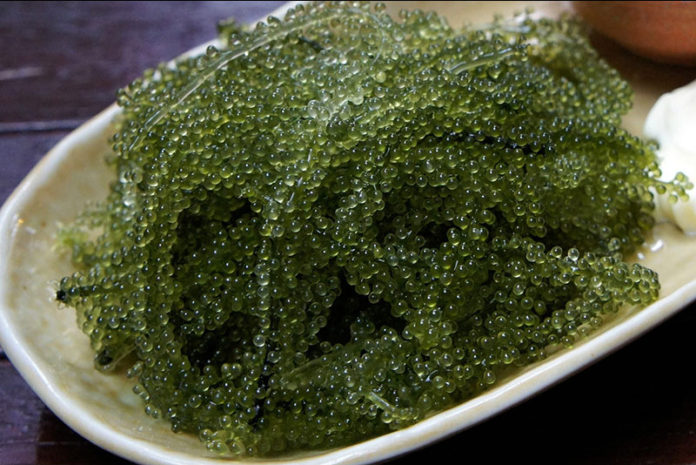Research center in Bicol region explores potential of seaweed farming and features 20 innovative products developed.
The commercialization of seaweeds and seaweeds products in Bicol Region is now underway, said Aida S. Andayog, manager, Regional Fisheries Research and Development Center (RFRDC) Region V. This was made possible through the collaborative efforts of the Department of Agriculture- Bureau of Agricultural Research (DA-BAR), Bureau of Fisheries and Aquatic Resources – National Seaweed Technology and Development Center (BFAR-NSTDC), the local government units (LGUs), and fisherfolk partners.
Initially, on-farm research and a seaweed nursery were established in 2003 through a Community-based Participatory Action Research-funded project on seaweeds production that became a model farm for the coastal municipalities of Sorsogon and eventually, in the whole region.
With enough harvests of seaweeds, the fisherfolk, through the continuous assistance of the different bureaus of DA, have found ways to market their produce and came upon the idea of processing them into various food products.
The project, “Product Development/Improvement and Commercialization of Seaweeds in Bicol Region” led by Ms Andayog paved the way for developing seaweeds into various innovative food products.
Specifically, the project was aimed at systematizing and creating a comprehensive development and commercialization of seaweeds and processed seaweed products in the Bicol region and to establish village-level seaweed production and processing enterprises.
As a strategy, the project tapped the existing people’s organization (PO) and assisted them in the production, development, and formulation of processed food products derived from seaweeds. These are the Tiwi Food Processors Association (TFPA), Green Ladies Association (GLO) and the Malinao Food Processors Association (MAFPA) from Tiwi, Albay and the neighboring town of Malinao.
Trainings and seminars were also conducted to educate farmers and the PO members on the principles of good manufacturing practices (GMP) and sanitation standard operating procedures (SSOP) which are prerequisites of the Hazard Analysis Critical Control Points program (HACCP) and a guarantee of the quality of seaweed food products produced.
Furthermore, products underwent sensory evaluation to assess the product appearance, odor, flavor and textures and, more importantly, its nutritional value through nutritional evaluation.
“We develop and create new products which are not only affordable but are also nutritious,” Ms Andayog emphasized.
Currently, has developed 20 nutritious products from seaweeds. These are: seaweed candies, seaweed noodles, pickled seaweeds, seaweed chips, nata de seaweeds, seaweed tart, seaweed jam, seaweed chocolate bar, yema with seaweeds, craknels de seaweed, seaweed longanisa, macaroon with seaweed, fish lumpia with seaweed, seaweed morcon, “Namnam” or baby’ food, seaweed capsule, seaweed marmalade, seaweed kropek, seaweed juice, gulaman cupcake, and other value-adding products.
“These products have competitive advantage in the market considering the uniqueness, taste, and nutritional value. Seaweeds are low-calorie food, with a high concentration of minerals, vitamins, proteins and digestible carbohydrates, and some lipids. Seaweeds also contain fats and are rich in iodine, iron, magnesium, and sodium and has high amounts of calcium and phosphorous. This could be the answer to heart disease and hypertension” Ms Andayog explained.
The project is funded by BAR under its National Technology Commercialization Program (NTCP), one of its banner programs designed to promote viable technologies on agriculture and fisheries by providing financial assistance, and to encourage small farmers and fisherfolk to engage in agribusiness.(Edmon B. Agron)





